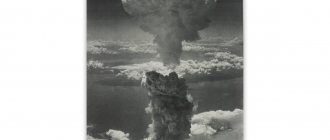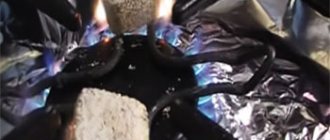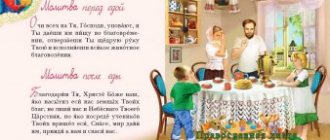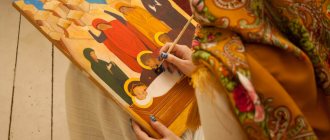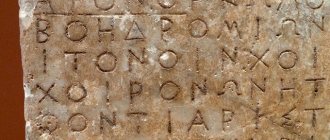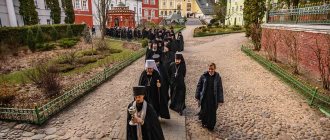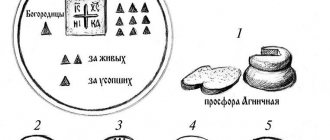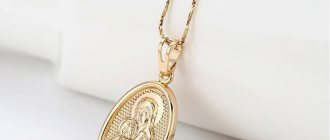What is a rosary
Rosary beads are a special type of religious paraphernalia. They are used by believers of different faiths. In Orthodoxy, all monastics have them. The very first religious objects of this type appeared in the 4th century in monastic communities. They were invented so that the inhabitants of the communities, who were mostly illiterate, could count the required number of bows and prayers during prayer work.
The monks had to pray not only during the allotted time, but also while working. Usually the work was monotonous, which is why they often felt sleepy. By fingering the rosary, they concentrated better on their work and did not fall asleep. Now every monk, choosing monastic life, must receive this item.
What do rosary beads look like? These are beads strung on ribbons or threads closed into a ring. Small beads are separated from each other by larger balls or knots. Separation occurs after every ten balls. Orthodox religious elements must have a cross.
How many beads are in a rosary? There can be from 1 dozen to 10 in a chain. They are made of different materials. There are stone, wood, glass, woven wool, soutache.
Functions of the rosary
The purpose of the rosary has changed from century to century. In Eastern religions, leisurely fingering of cool beads helped the worshiper enter a meditative state, detach himself from the surrounding bustle and get closer to enlightenment. Muslims call the rosary a “whip for the devil.” In early Orthodoxy, the essence of the rosary was to help monks who could not count not make mistakes in the number of prayers repeated many times. Over time, rosary beads entered the lives of the laity and even became an attribute of fashion.
How Orthodox Christians Use Rosary Beads
This attribute helps Orthodox Christians read prayers. Most often, a believer reads the Jesus Prayer (“Lord Jesus Christ, Son of God, have mercy on me, a sinner”), sorting through smaller beads. When it reaches a large grain, say the prayer “Rejoice to the Virgin Mary,” Guardian Angel, and also “It is worthy to eat.” Reaching the cross, he reads the main great prayer - “Our Father.”
Is it possible for the laity to use this cult paraphernalia? It is believed that the laity cannot use it without blessing. Before purchasing, a layman must take a blessing, because not every Christian knows how to use this item. The priest will explain how to use the rosary, which ones to choose, which prayers to read.
But there is also an explanation: blessing is required when a person undertakes a feat of prayer in order to read prayers according to special rules. To find out whether you need to take a blessing, it is better to ask your confessor.
Usually the priest advises using them during private prayer. These items act as an aid to the worshiper in concentrating on his prayers. They have no other function.
Do not think that they are endowed with any magical or protective properties. They don't have this, so it shouldn't be worn as decoration, displayed on every occasion, or hung in the car.
Lestovka
This type is classified as an Old Believer rosary. They consist of a tape connected into a ring, consisting of special loops. Paper rolled into tight rolls is inserted into these butterfly loops. A short prayer is written on each piece of paper. For example, it could be “Lord, have mercy.” It is believed that such rosaries help believers to completely devote themselves to prayer and renounce earthly affairs.
The Monk Seraphim of Sarov was often depicted on icons with a ladder.
Leaflets were also used by Sergius of Radonezh, Juliania Lazarevskaya, Erasmus of Kiev-Pechersk, Seraphim Vyritsky. The leaflet next to these saints symbolizes the spiritual ascent from mortal earth to heaven.
Under no circumstances should rosaries be treated as a means of decoration - used as decoration on the body, in the car or at home. The rosary is an instrument of prayer, not a beautiful accessory.
Types of Orthodox prayer beads
Christians must use only Orthodox attributes. In this case, you need to know how they differ from religious objects of other faiths.
When choosing this spiritual item, pay attention to the number of links. For the Orthodox, it is a multiple of ten: 20, 30, 50, 100, 150. Previously, they were made only from leather (lestovka) or wool (knots). Stone and wood came to us from other spiritual cultures, but can also be used when reading prayers if you have received a blessing.
Broyanitsa
Broyanitsa is a simplified version of vervitsa. It is worn on the hand like a bracelet. Broyanitsa consists of 33 knots, as a symbol of the number of years of the earthly life of Jesus Christ. This species can be recognized by a small equilateral cross made of wood or metal. There may be a small icon on the cross.
It’s better not to buy a broyanica yourself, but to receive it as a gift and put it on your wrist in the same temple where it was given to you.
Vervitsa
Vervitsa is the main Orthodox attribute. It is woven in a special way in the shape of a cross. Vervitsa has 100 knots, separated every 10 or 25 balls by a larger knot.
You can see ropes with a thousand knots or very small ones (10 and 33). They are worn as a bracelet or even on the finger as a ring. But you don’t need to hang it around your neck like a decoration. These items have a completely different purpose.
Lestovka
The lestovka is the main object for reading prayers among the Old Believers. It is distinguished by many rollers, where very short prayers are inserted, for example, “Lord, have mercy.”
From the ladder you can see many saints: St. Seraphim of Sarov, Sergius of Radonezh and others. In their hands, the ladder is a symbol of spiritual ascent to heaven.
How to pray the rosary? You need to sort through the beads while reading a prayer: one bead - one prayer. Holding one bead of your left hand between your fingers, you should read the Jesus Prayer or “Virgin Mother of God, Rejoice!” And so on 10 times. All prayers should be read in this way.
Vervitsa
This type of rosary has its roots in the distant past. They are a rope with knots of various sizes tied on it. This option is considered the main type of Christian rosary. It is the vervitsa that believers are offered to buy in parish stores.
These rosaries are woven in a special way, using a large piece of woolen ribbon. Make 100 knots, which are divided every ten or twenty-five small ones with one larger knot. Sometimes the number of nodules reaches a thousand, and sometimes there are only ten or thirty-three. Such “little ropes” are worn on the hand.
What are the differences between Buddhist rosaries?
Buddhist rosary beads (malas) are also made of beads strung on a cord, at the end of which there are many threads similar to a “tail”. While reciting mantras, believers also sort out the beads so as not to lose count and not miss the mantra.
Typically, Buddhist malas consist of 108 beads, but there are 18, 21, 27 beads.
When mantras are read, the malas accumulate energy, coming into resonance with the energy of the person praying. Therefore, in Buddhism they are used as amulets that bring good luck and improve the life of the wearer.
People who profess Buddhism have been using the same beads for a long time. During use, they gain positive energy, which helps a person get rid of nervous tension, gain peace of mind, and recover from many diseases.
History of origin
Rosary beads first appeared in India in the second millennium BC. At that time, monks used them while reading mantras to concentrate their attention. Touching the beads helped to activate the mind and prevented falling asleep during long rituals.
Subsequently, the rosary spread throughout the world, and Muslim, Christian and Catholic rosaries also appeared. They look a little different and have their own individual characteristics.
In Buddhism, beads are needed to count the number of mantras and prayers read, as well as the number of rituals and bows that were made.
So, let's first learn more about their structure.
Types of Buddhist rosary
Malas are made in different colors and different materials. This is done because each color and material has its own effect on the body.
Usually the color of the beads and the color of the thread are made in the same color.
How do they affect a person, based on color:
- For treatment, white objects made of pearls, white sandalwood, crystal, and ivory are used. White color purifies and heals all diseases;
- Yellow sunny color will help increase energy in the body and increase wealth;
- Black and red are suitable for tactical practices.
The color, thickness of the thread on which the beads are strung, and even their shape help determine which school a believer belongs to and find out what level of initiation he is at.
How the material affects humans:
- Red sandalwood has a warming effect;
- White sandalwood will help you calm down and overcome temptations;
- Juniper eliminates any negative influence;
- The oak will act as a protector for its owner;
- Lotus seeds will contribute to increasing prosperity;
- Rudraksha seeds will help to endow a person with strength and great energy potential.
If the beads are not made from wood, then what stones are they made from?
- Pearl is a feminine stone. It reveals a person’s creative potential, harmonizes the work of all 7 chakras;
- White agate promotes spiritual growth and increased intelligence;
- Vajrayana followers choose cult items made from the frontal portion of the human skull to enhance psychic abilities.
You can use Buddhist objects just like Christian ones. Only you need to read not prayers, but mantras. Usually believers buy a special bag in which they keep their rosary. They even sort it out in a bag so that foreign energy does not spoil their strength.
If you start reading mantras, then do not quarrel, forget obscene language, do not raise your voice, do not drink alcohol, do not smoke, so as not to “damage” the positive energy.
Materials
The rosary is an amulet that protects its owner from evil spirits and negative energy, so completely different materials are used to make them, depending on the goal that the practitioner wants to achieve.
They can be made of wood (sandalwood, juniper, boxwood, neem), precious or semi-precious stones, gold, silver, and even human and animal bones. The material depends on the traditions and characteristics of different schools of Hinduism and Buddhism.
For example, Shaivists use rudraksha for beads, Vaishnavas use tulsi and neem, Shaktas use crystals, metal, Buddhists use juniper, sandalwood, lotus seeds and Bodhi tree seeds, and Tibetan Buddhists use bones, precious or semi-precious stones.
How to use rosary beads in Islam
Muslims also need to concentrate when reciting their prayers.
What do Muslim religious accessories look like? They contain 99, 33 or 11 grains. The quantity is not taken at random:
- 99 is the number of names (epithets) of Allah. The interpretation of “beautiful names” can be found in any Muslim prayer book;
- 33- for long objects this is one of three “links” that are sorted into 3 circles;
- 11 is the most common number of beads in a rosary among the laity. This is a symbol of the number of parts in a prayer. When performing prayer work, Muslims perform each of the 11 parts of the prayer very strictly.
Every 11 balls are separated from each other by a smaller bead or other part that differs in shape or size. The cult attribute also closes in a circle. In the spiritual world, it is the circle that is considered a sign of infinity and the “crown of faith”, accumulating power.
Where the circle closes, a large oblong bead or pebble is attached, which reminds the worshiper that God is one for everyone. Often the end of the circle is decorated with a tassel made of silk threads. Muslim attributes are made of wood, semi-precious stones, glass or bone.
In the Islamic world there are also flip-over prayer elements. They are most often used by Caucasian mountaineers. They consist of oblong rectangular parts, and small balls are attached between them.
Most often they include 13 components, but they are also available with 8, 10 or 12 elements. The meaning of reversible religious objects directly depends on the material from which they are made. Objects carved from the best wood species are more popular.
Wooden objects are made from expensive wood, which helps emphasize the individuality of their owner. By sorting through elements made of natural wood, a person relieves emotional stress, begins to control his emotions, and eliminates sleep problems.
Often this practice helps in the treatment of physical ailments. By sorting through small elements, a person improves joint health. And training fine motor skills has a beneficial effect on the health of the whole body.
What is the difference between “talkers”
Flip beads or “talkers” are a mandatory attribute that emphasizes a certain image of their owner. The ability to handle them correctly also gives a person a certain authority and status.
Initially, such an attribute was made in places of deprivation of liberty. These were handmade models from the most expensive materials - stones, metal or northern wood.
You need to know how to turn the “talkers”. But knowledge does not come immediately. You need to have a skill that can be practiced over months and even years.
Transfer items are carried only in the hands. The simplest technique looks like this:
- Hold the rosary between the middle and index fingers in the center. You can take it in any hand.
- Next, flip the lower end so that it is at the top. Pinch with your thumb and index finger.
- After this, you should wave the end of the rosary again. There should be a full rotation around your fingers.
- Thus, go around in a circle. The rosary should twist in the same direction. It is important that the ends click during contact.
There are other, more complex practices for handling this item. The more relaxed and easier a person performs all movements, the higher his authority.
What are they for?
Let's figure out why Orthodox rosaries are needed. First of all, it should be noted that in any religion a common practice is prayer, where some texts should be recited several times in a row, which in turn requires some order of counting.
The best article for you, go to: The Epistle of the Apostle Paul to the Galatians
This is precisely the function that religious beads perform, that is, it is quite easy to track the number of prayers spoken simply by fingering the attribute in your hands. In principle, from a religious point of view, this is the only purpose of such an item.
